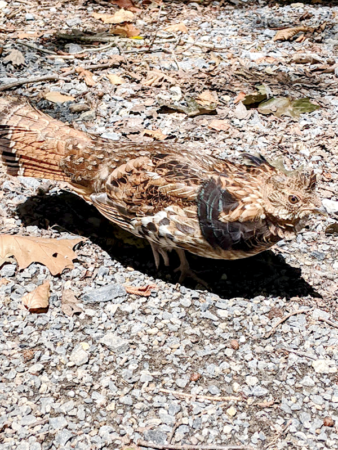Pennsylvania’s grouse season opens statewide on October 16 and runs to November 26; a second season runs from December 13-24. I’d be the first to admit that I am not a dedicated grouse hunter, but I have enjoyed walking the woods on a number of occasions with my 12-gauge at the ready. I’ve certainly missed my share, but I have bagged a few over the years. On the other hand, serious grouse hunters are usually accompanied by a well-trained dog, and these grouse hunters usually have higher success rates. However, it seems that there are fewer and fewer grouse hunting enthusiasts, and one good reason might be that we see fewer and fewer grouse.
The decline in grouse numbers is not just in Pennsylvania; Maryland, West Virginia, and other states are also experiencing lower numbers. Grouse populations tend to fluctuate in five to ten-year cycles, but there seems to be a steady decline in recent years. A number of factors can contribute to lower grouse populations, including cold, damp springs that may take a toll on young and prolonged cold winters that can reduce survival rates. Other factors like predation, accidents (I’ve seen several along roads that were no doubt hit by cars), loss of habitat, and even disease. By the way, biologists believe that hunters do not take enough grouse during hunting seasons to have an impact on populations.
Loss of habitat and disease are probably the two most influential factors in lower populations. Our maturing forests are likely having a negative impact since grouse prefer younger forests where dense cover is more likely; groves of dense aspens are good examples. In addition to the loss of habitat, the disease factor is also adding to reduced numbers. The disease West Nile, which is transmitted by mosquitoes, affects humans and other animals and has been a factor in the reduction of bird populations, including crows and even grouse. It seems the steady decline started around the year 2000, and Pennsylvania Game Commission data surveys reflect that. In 2018 the flush rate was 0.88 grouse per hour, a six percent decrease from the previous year. Sight surveys also were down thirty-three percent from the previous year.
The fact that mosquitoes transmit West Nile is even more interesting considering the amount of rain we have had this past summer; you can bet there are more mosquitoes roaming the countryside. That was very evident when I mowed grass this summer at my river campsite. I was talking with another grouse hunter recently about West Nile. He had an interesting observation; he told me he has been seeing more grouse up higher in the mountains in northern Pennsylvania than we are seeing in the lower elevations. That’s interesting since the mosquitoes are probably not as prolific where less water accumulates.
While I can’t say that there is any science to back it up, but there may well be more grouse flushing possibilities in the higher elevations. I’m sure good dense habitat would also be a plus.





Leave a Comment
Your email address will not be published. Required fields are marked with *